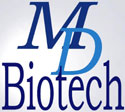|
|
Become a Print Subscriber
Subscribe online today! Subscriber Services |
|
Buy EHP Publications
View Shopping Cart Advertising Information |
|

|
|
|
|
publications
:
by topic
:
subscribe
:
authors
:
submit papers
:
reviewers
:
email alerts
:
press
:
about EHP
:
contact
|
|
|
|
|
|
|
||||||||
|



